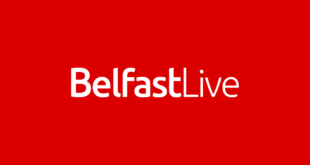Read our preview of key economic and corporate events in the week commencing 18 July 2022, and view our company earnings schedule. Look out for a potentially market-moving week, with a host of key economic indicators and earnings, including the latest inflation data for the UK and eurozone, ahead of the ECB rate meeting. US earnings season continues with updates from Bank of America (NYSE:), Goldman Sachs (NYSE:), Tesla Inc (NASDAQ:), and Netflix (NASDAQ:). Closer to home, Royal Mail (LON:) and Ocado (LON:) also unveil their latest numbers.
Our top three events (18-22 July)
UK CPI (June) – Wednesday 20 July
May’s consumer price index (CPI) data saw headline CPI post another record high of 9.1%, although core prices slipped back to 5.9%. Despite the slide in core prices, every other measure, including RPI and PPI, showed little sign of a slowing in underlying price pressures, with PPI input prices jumping above 20%, and increasing further in May to a new record of 22.1%. The old inflation measure of RPI rose to 11.7%.
The headline CPI number is predicted to increase further in the coming months, with the Bank of England expecting a peak at an eye-watering 11% by year end, an upgrade from its previous 10% estimate. This raised a few eyebrows given its pledge at the most recent meeting to act “forcefully” on inflation if necessary. This rather begs the question, what level of inflation would justify a more forceful response? By comparison, the US central bank is set to raise rates by another 150bps by September, in response to a lower inflation problem.
A lot of the increase in CPI is now starting to manifest itself in higher gas, electricity, and petrol prices, which accounted for over 4% of the increase in May and looks set to continue in June. Expectations are for a rise to 9.2%, however we could go even higher if last week’s big spikes in the US are any guide. I wouldn’t be surprised to see 9.5%, which would increase the pressure on the Bank of England to raise interest rates by 50bps in August.
Tesla Q2 results – Wednesday 20 July
When Tesla reported in Q4, it drew down the curtain on a record year for the electric vehicle company. Tesla posted a record annual profit of $5.5bn, but warned that supply chain problems were likely to be a headwind moving into 2022. Despite these concerns, Tesla was able to report record revenue and profit in Q1, of $18.76bn and $3.3bn respectively, helped by a big improvement in gross margins to 32.9%, up from 30.6% in Q4. This slowed during Q2 to 254,000 deliveries, due to higher costs, as well as supply chain disruptions, caused by events in China. Having delivered 936,172 vehicles in 2021, the hope is that 2022 will push that total strongly above the 1m mark, to over 1.3m.
With both Q1 and now Q2 deliveries hit by supply disruptions, Tesla could struggle to hit its 1.3m delivery target for this year, if the supply chain disruptions continue, and the economy slows due to higher interest rates. On the plus side, the new plant in Germany has finally opened, albeit later than scheduled, but this should help Tesla boost its production levels, against a backdrop of rising costs and chip shortages. On the downside, its China factories have been hit by the various covid lockdown restrictions which will have impacted sales during Q2, with April and May likely to be hit hard. In June, Tesla managed to deliver 78,906 China-made vehicles, a rise of 145% month-on-month, with most of those delivered to the local market. In April, this figure was just 1,512, with zero exports. Looking ahead to Q3, output in July is expected to be disrupted by maintenance shutdowns at its Shanghai and Berlin factories. Q2 profit is expected to come in at $1.81 a share.
ECB rate decision – Thursday 21 July
With inflation already at record highs across the euro area, the ECB is expected to raise its key rates by 0.25% at Thursday’s meeting, with a pledge to raise them again in September, which it set out at its June meeting. In monetary policy terms, this rate move is the equivalent of bringing a knife to a gun fight. Since June, the single currency has continued to fall, with markets sceptical that ECB president Christine Lagarde and the governing council will be able to orchestrate a credible response to the threat of rising inflation in the euro area.
With inflation already at a record 21.9% in Estonia, and 19.3% in Lithuania, the Baltic States are being hammered, with countries like France at 5.8% – this is being disguised by the French government capping energy prices, and nationalising its power company EDF (EPA:) in the process. So a rate rise of 25bps is merely tinkering around the edges when it comes to inflationary pressures of this magnitude, with rates in negative territory, and the euro down over 14% in the last 12 months, having moved below parity against the US dollar.
The ECB’s biggest problem is not so much that it’s powerless to mitigate current levels of inflation; it’ the increasing splits on the governing council over how much rates need to rise without causing instability in eurozone bond markets, and widening spreads, particularly between Italian and German bond yields. Political instability in Italy isn’t helping the ECB manage Italian borrowing costs, and while Lagarde was at pains to mention the ECB would be looking to unveil a special tool to deal with this problem, markets are looking for more than just details at this meeting.
There has been growing pessimism that the ECB will be able to deliver anything on bond buying that would keep it within the boundaries of what is legal under the ECB capital key, as it starts to raise rates. There has been talk of OMT, but that requires conditionality being applied, and it has never been used or tested. The ECB is likely to limit itself to tough talk about an anti-fragmentation tool, in the hope that another ‘fudge sandwich’ will do the trick, but we’re rapidly moving into the realms of the ECB having to do more than just talk.
More key events this week
Monday 18 July
Bank of America Q2 results
Bank of America’s share price has shown weakness, like the rest of the US banking sector, over concern about a slowing US economy. Unlike Goldman Sachs, which has a limited retail operation, Bank of America is more exposed to a slowdown in the US economy, as higher rates weigh on the housing market, and consumer and business lending. Nonetheless, its Q1 numbers were still better than expected in at $23.33bn, while profit came in at $0.80 a share. The bank posted a lower-than-expected $30m provision for credit losses, as well as releasing $362m in reserves. Its lending numbers painted a more encouraging outlook for the US consumer than its peers, although investment banking revenue was similarly lacklustre compared to a year ago.
CEO Brian Moynihan came across as fairly bullish on the outlook, saying that US consumers were still sitting on sizeable amounts of cash, although that doesn’t square with what we saw in March when US consumer credit surged to a record $47.34bn, with credit card transactions accounting for almost half of that total. Moynihan’s take seems odd, after all why spend record amounts on credit cards at a time of rising rates, if you’re sitting on sizeable amounts of cash? This bullishness is likely to be tested in Bank of America’s Q3 outlook, and whether the bank starts to make credit provisions for inflation.
Goldman Sachs Q2 results
Having undergone a record year in 2021, Goldman Sachs’ share price was riding high at record levels as recently as last November, having turned over record revenue of $59.3bn. Since then, the shares have declined sharply, by over 25%. A lot of the gains last year were driven by the investment bank; however, the subsiding of one-off pandemic effects and the prospect of tighter margins have weighed on future growth expectations.
In Q1, the bank was still able to post numbers that put its peers in the shade, however this wasn’t enough to stop further declines during Q2. Q1 net revenue came in at $12.93bn, beating expectations by over $1bn, while profit came in at $10.76 a share, well above expectations of $8.90 a share. Unlike its peers, expenses fell significantly, coming in at $7.72bn. Like JPMorgan (NYSE:), Goldman set aside $561m in respect of provision for credit losses related to growth in its credit card portfolio. Of that total revenue, trading revenue came in at $7.87bn, comprising $3.15bn for equities and sales trading, and $4.72bn for fixed income and trading (FICC), its best return in over five years. This blasted through expectations of $3.12bn, and was mainly due to the pickup in volatility seen in commodity markets, which has continued in Q2. Expectations are for profit of $7.03 a share. The outlook for Q3 is likely to be key amid concern that the US is already in a technical recession.
Tuesday 19 July
UK average earnings (June)
The most recent earnings and unemployment data for March showed that the labour market remained tight for the three months to March, with unemployment falling to 3.7%, the lowest level since 1974. This edged higher in April to 3.8%, and could see 3.9% in the May numbers, although the Office for National Statistics said there were fewer unemployed people than job vacancies. This tightness in the labour market doesn’t appear to be being reflected in upward pressure on wages, as average weekly earnings including bonuses rose by 6.8%, falling from 7% in March. Without bonuses the rise has been much more modest, remaining unchanged at 4.2%. This remains well below the headline CPI rate of 9.1%, however, though new fiscal help offered by the chancellor should take some of the pressure off the cost of living, as we head into the summer months. With the Bank of England coming under increasing pressure to hike rates further, any more significant evidence of rising wages could see further rate-rise bets increase. With agitation in the public sector over below-inflation wage rises, increasing wage growth pressures are unlikely to subside.
EU CPI (June)
We’re set to see another record high for the EU CPI inflation rate in June, after the latest flash number rose to 8.6% earlier this month, up from 8.1% in May. More encouragingly, core CPI fell back from 3.8% to 3.7%. But with food and energy helping to drive this shock, and the costs of doing business also rising, with PPI even higher, that’s expected to cut little ice with most people, especially in northern parts of Europe, where CPI is well above 10%, and in some cases over double that. Tuesday’s EU CPI data is more or less a signpost ahead of the ECB’s rate decision on Thursday, where rates are expected to rise by 25bps in response to an inflation rate that is set go even higher.
Netflix Q2 results
The implosion in Netflix’s share price has been something to behold over the last few months. Since the heady heights of $700 in November last year, we’ve seen a collapse in confidence that has returned the shares to levels last seen in 2017. Subscriber growth had been the main driver of its gains in 2020, but came to a shuddering halt in Q1, as investors started to wonder whether we’ve hit peak Netflix. The main fear for Netflix shareholders was how would the business cope once its deeper-pocketed rivals started to cotton on to the streaming model that Netflix has helped shape over the last 10 years.
It appears we are starting to see the answer to that question, with the emergence of Disney+ as its main new rival, while Amazon (NASDAQ:) is also spending big on new content, with a new Lord of the Rings series called Ring of Power. Paramount+ is another new entrant to the streaming market, with a strong catalogue of its own, including the new Star Trek series Strange New Worlds, as well as a new season of Star Trek Discovery, which used to be on Netflix.
Netflix has brought forward its latest season of Stranger Things, which may have offered a respite; however, the shock fall in subscriber numbers in Q1 does raise questions as to whether the company will be able to build substantively as it did pre-pandemic.
The cost-of-living crisis has already led to streaming cancellations this year, which led to Netflix reporting its first quarterly decline in subscribers in a decade, losing 200,000 customers, against an expectation that it would gain 2.5m. This cut total subscribers from 221.8m to 221.64m. Netflix said it expects to lose another 2m subscribers in Q2, against an expectation of +2.4m.
Netflix has still been able to report decent revenue, at $7.87bn in Q1, while profit came in at $3.53 a share. Netflix expects to grow revenue by about 10% year-on-year, with an operating margin of 19% to 20%. This appears optimistic though, and the stronger US dollar certainly isn’t helping. Netflix said it’s currently producing films and TV in more than 50 countries, with three out of its six most popular TV seasons using non-English language titles, and yet refuses to hedge its FX exposure. This is madness on a grand scale, and while it has teamed up with Microsoft (NASDAQ:) on a lower cost advertising model, this has the risk of cannibalising its higher value subscription model.
There are also signs that Netflix might also look at moving into sports, however that has the downside of being hugely expensive, and as other providers have found, not particularly profitable. Profit is expected to come in at $2.94 a share.
Wednesday 20 July
UK CPI (June)
See top three events, above
Royal Mail Q1 results
Since Royal Mail reported its full-year numbers in May, the shares have continued their downward slide, falling out of the in June, down over 40% year to date. Full-year group revenue rose by 0.6% to £12.71bn, short of expectations of £13bn, while operating profit fell by 5.6% to £577m, due to higher spending on overtime, and other related staff costs. Royal Mail revenue declined 1.6% to £8.5bn, largely due to the removal of lockdown restrictions changing consumer behaviour, however this was offset by a 4.4% rise in GLS revenue to £4.2bn, which was driven by a recovery in freight and B2B volumes.
Looking ahead, the outlook appears challenging, with the company locked in discussions with staff over its latest pay round, with the threat of possible strike action. Assuming a successful outcome, current adjusted operating profit consensus for Royal Mail is £303m, with downside risk. The company aims to make cost savings of £350m, with 700 managerial jobs set to go as part of a reorganisation plan. This has prompted managers to vote for work to rule between 15 and 22 July, and to strike completely on 20 to 22 July. This action will cause disruption, while Royal Mail says it expects to have to raise prices on stamps and parcels to cope with higher fuel costs and wage demand.
For the GLS division, expectations are for high single-digit revenue growth, and operating profit of about £320m. Collectively this would equate to a combined operating profit of £623m for the new fiscal year, albeit with the caveat of downside risk on the Royal Mail side of the business.
Tesla Q2 results
See top three events, above
Thursday 21 July
Ocado half-year results
When Ocado downgraded its full year outlook for sales growth from 10% to low single digit growth back in May, the shares initially slipped back. This was against a weak backdrop after Q1 revenues declined 5.7%, against the same period a year ago. The decline in revenues was against a backdrop of strong comparatives, even though orders were higher to the tune of 11.6%. Offsetting that the company said that they were experiencing significant increases in the costs of raw materials, energy, and product cost prices. The company cited higher fuel and utility costs for the impact of lower sales, as well as the impact on its own cost base, in the form of higher costs. Its retail operation which it operates in conjunction with M&S cited lower basket sizes for an 8% drop in sales in Q2, compared to a 5.7% decline in Q1. Ocado has said it will have to increase prices, however it’s not immediately obvious that this will offset the higher costs of doing business. The business is due to add extra capacity at Purfleet and Andover, with a new facility opening in Canning Town. Since that Q2 profits warning in May, the shares have recovered largely on the basis that markets had already been pricing some form of slowdown. Since the start of the year, it’s been the worst performer on the FTSE100, down as much as 50%. In June the shares came under pressure after management announced that they had raised £578m in a discounted cash raising in a move that will see the cash used to speed up its investment in innovation and build solutions at a faster pace. The company also announced that it had agreed a new £300m revolving credit facility.
ECB rate decision
See top three events, above
Friday 22 July
UK retail sales (June)
It’s been a painful start to the year for consumers in the UK, with collapsing consumer confidence and rising prices exercising an increasing pinch on disposable incomes since January. The economic outlook hasn’t been helped by an increase in tax rates, which came into effect in April, at the same time as energy bills rose by 54%. In April retail sales saw a positive number, however were revised down heavily from 1.4% to 0.4%, with most of the improvement driven by sales of alcohol and tobacco in supermarkets, while fuel sales also rebounded. In the May numbers which saw a decline of -0.5%, there was a notable slip in food sales. As we look to the June numbers and the final month of Q2 the Platinum Jubilee celebrations might well have seen a rebound in food sales as a result of the four-day bank holiday weekend, however as far as Q2 GDP is concerned its likely to be a weak quarter for the UK economy.
Index dividend schedule
Dividend payments from an index’s constituent shares can affect your trading account.
Selected company results
| Monday 18 July | Results |
| Audioboom (UK) | Half-year |
| Bank of America (US) | Q2 |
| Goldman Sachs (US) | Q2 |
| Tuesday 19 July | Results |
| Halliburton (NYSE:) (US) | Q2 |
| Johnson & Johnson (US) | Q2 |
| Netflix (US) | Q2 |
| Photo-Me International (UK) | Half-year |
| Wednesday 20 July | Results |
| Alcoa (NYSE:) (US) | Q2 |
| Royal Mail (UK) | Q1 |
| Tesla (US) | Q2 |
| United Airlines (US) | Q2 |
| Thursday 21 July | Results |
| AT&T (US) | Q2 |
| Capital One Financial (NYSE:) (US) | Q2 |
| Ocado (UK) | Half-year |
| Snap (US) | Q2 |
| Tenet Healthcare (US) | Q2 |
| Friday 22 July | Results |
| American Express (NYSE:) (US) | Q2 |
| Beazley (US) | Half-year |
| NextEra Energy (NYSE:) Partners (US) | Q2 |
| Verizon (NYSE:) Communications (US) | Q2 |
Company announcements are subject to change. All the events listed above were correct at the time of writing.
Disclaimer: CMC Markets is an execution-only service provider. The material (whether or not it states any opinions) is for general information purposes only, and does not take into account your personal circumstances or objectives. Nothing in this material is (or should be considered to be) financial, investment or other advice on which reliance should be placed. No opinion given in the material constitutes a recommendation by CMC Markets or the author that any particular investment, security, transaction or investment strategy is suitable for any specific person. The material has not been prepared in accordance with legal requirements designed to promote the independence of investment research. Although we are not specifically prevented from dealing before providing this material, we do not seek to take advantage of the material prior to its dissemination.
Original Post
Source link



